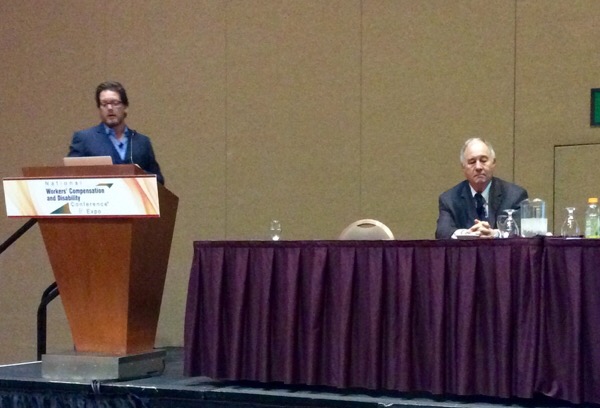Mitigating Psychosocial Risk Factors
As claims drag on, injured workers may start believing that their injuries, disabilities and chronic pain are worse than they actually are. They may perceive the workers’ compensation system is treating them unjustly and withdraw from work and social activities, fueling further catastrophic thinking and fear. This session at the 24th Annual National Workers’ Compensation & Disability Conference showed how such psychosocial risk factors common in delayed-recovery cases can be identified early and mitigated with evidence-based interventions that improve return-to-work results.
Speakers included:
- Darrell Bruga, Founder and CEO at LifeTEAM Health
- John T. Harbaugh, M.D., Occupational Medicine Physician Director at Southern California Permanente Medical Group
There are two directions you can go. Are you going to improve outcomes or leave dollars on the table with expensive claims? Many insurers are taking the bull by the horns and understanding the importance of addressing psychosocial factors.
One problem is the medical marathon that injured employees often endure that drives the delay in recovery. We assume that if we address pain, the employee will get back to work. Addressing pain, however, only drives 10% of getting the employee back to work – the other 90% consists of various psychosocial factors.
The psychosocial drivers are:
- Catastrophic thinking – Someone who can not stop thinking about their injury and what is happening to them.
- Perceived injustice – The feeling that something wrong was done to the employee. This is usually prominent in workers’ compensation claims.
- Beliefs and expectations – The employee’s perception of what is creating the condition.
- Fear – Includes unfounded ideas like “activity will make it worse”.
Take the time to listen and understand what is happening with your employee. It is important to pay attention to the language that the employee is using to explain their injury to determine which approach you can take to address these types of situations.
There are several ways to help decrease the psychosocial factors, including:
- Determine which psychological conditions are driving the claim. This can include anger, depression, hostility, fear of experiencing pain, complaints about the employer, poor compliance with therapy, unwillingness to consider light duty work and entitlement mentality.
- Intervene early. You have a better chance of changing the thought process by engaging with the injured employee early in their healing process and determining the risk factors to address. Proactive intervention is important to avoid delayed recovery.
- Challenge disability beliefs. Have the employee reflect and communicate what is different after their injury and address their perceptions.
- Change thought to change behavior. You can not talk people into getting better. You have to show them by creating structure, planning activities and creating consistency with their day. Create a life situation that is incompatible with disability.
- Set positive expectations. Sell the program so that the employee believes in it and motivate them to return to work.
- Re-engage people to their behavioral life role. If they do not have the perception of getting back to normal, that will affect their healing process. Determine their abilities and what type of activity that can begin to be worked into their healing process. Start small and gradually increase activity.
Psychosocial factors are not the exception, they are prevalent in the majority of cases. It is important to identify them early and address the appropriate factors to help employees regain their quality of life, heal and return to work.


